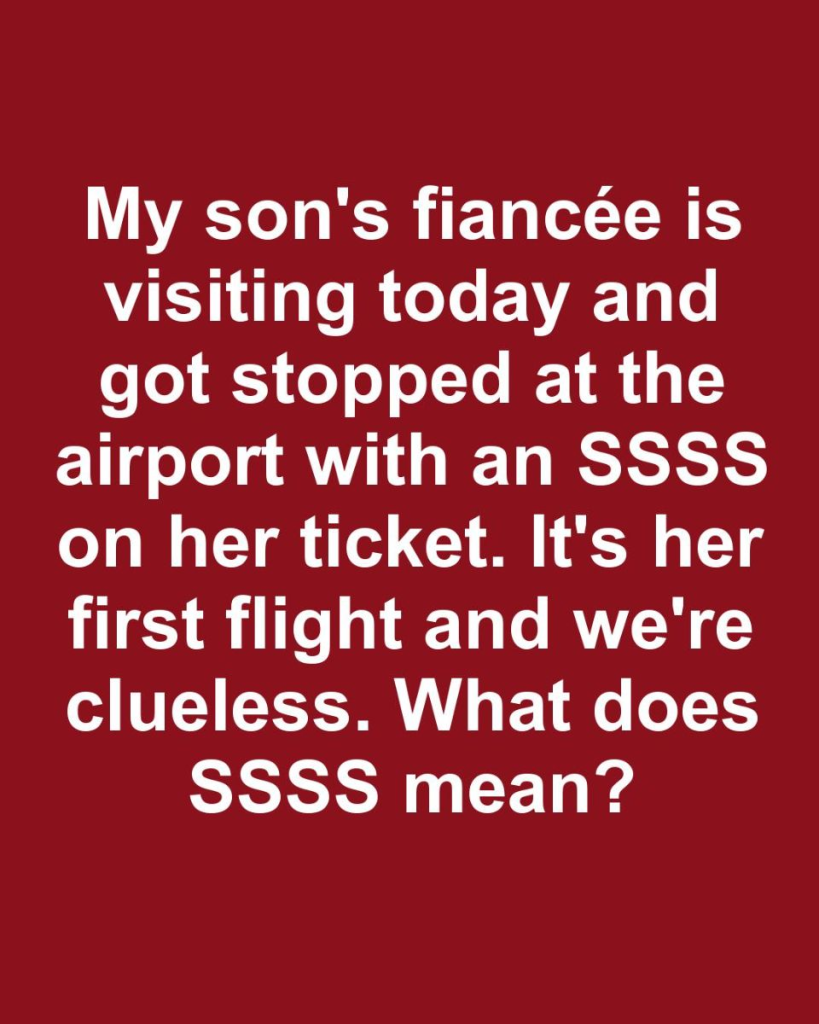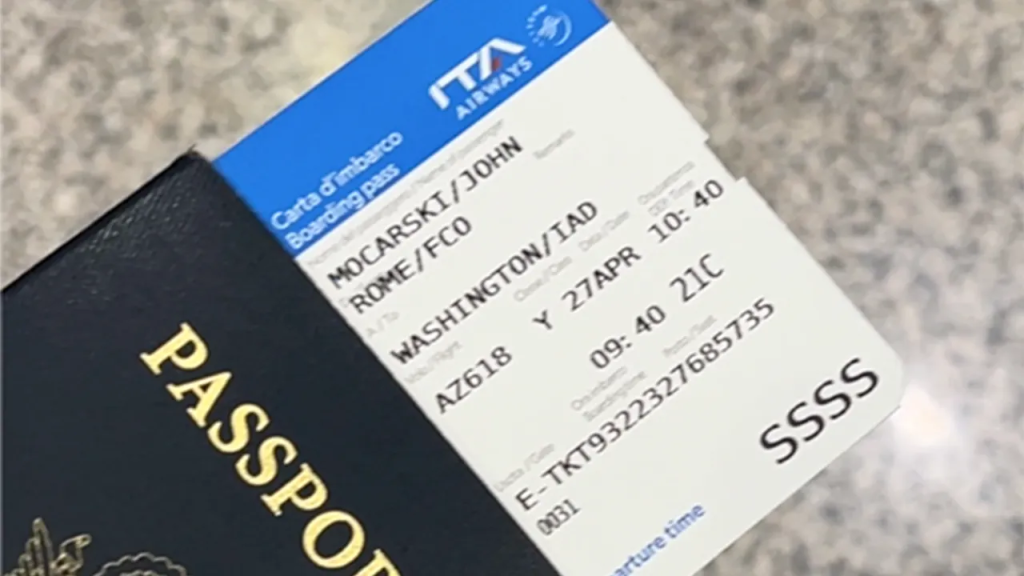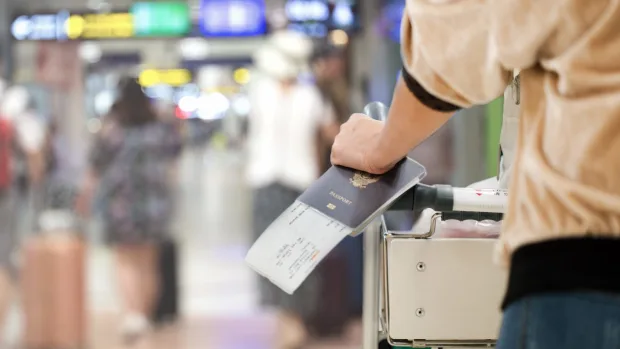You’re heading to the airport, luggage in tow, excited for that long-awaited trip. You check in, print your boarding pass—and then you see it. Four letters stamped across the corner: SSSS. Looks harmless, right? Just another airport code?
Not exactly.
If you’ve never seen those letters before, you’re not alone—and you’re probably not ready for the extra time, attention, and scrutiny they bring. Let’s break it all down so your next flight doesn’t turn into a stressful security marathon.

What Is SSSS, and Why Should You Care?
SSSS stands for Secondary Security Screening Selection. Sounds intense, huh? That’s because it is. When those four letters show up on your boarding pass, it means you’re going to be pulled aside for extra security screening at the airport.
We’re not talking about the usual shoes-off, laptops-out routine. This is the VIP (Very Intense Process) line—extra pat-downs, explosive swabs, detailed questions, and a thorough check of your bags and devices. So yeah, this is one acronym you don’t want to see.
Video: Why Passengers Dread Getting SSSS On A Boarding Pass
Why Did You Get Flagged?
That’s the million-mile question.
The truth is, SSSS can show up for all kinds of reasons—and many of them aren’t your fault. Here are a few common triggers:
- Last-minute bookings
- One-way international flights
- Tickets paid with cash or unusual cards
- Travel to or from high-risk countries
- Name matches someone on a watchlist
- Inconsistencies in your documentation
Sometimes, it’s totally random. TSA says that SSSS is just a part of their risk-based security process, and most people selected don’t pose any actual threat. But that doesn’t make the extra screening any more fun.
What to Expect If You Get the SSSS Treatment

Let’s say your boarding pass is marked. What happens next?
When you head to the security line, a TSA officer will redirect you to a designated area—usually off to the side. You’ll likely be subject to:
- A full-body pat-down
- Detailed inspection of your carry-ons
- Swabbing for explosives
- Closer checks of electronics
- Verification of travel documents—again
You might be asked where you’re going, why, and for how long. Sometimes even where you stayed last night. It can feel invasive, but if you stay calm and cooperative, you’ll get through it faster.
Pro tip: be early. The process can add anywhere from 20 minutes to over an hour to your pre-boarding time.
How SSSS Can Impact Your Travel Experience
Video: What does ‘SSSS’ on your boarding pass mean?
Here’s the deal: SSSS doesn’t mean you’re in trouble. But it does mean you’re going to wait longer, go through more checks, and possibly feel a bit singled out.
If you have tight layovers or connections, this could spell disaster. Delays at the security checkpoint can eat into your boarding time fast. That’s why it’s smart to:
- Arrive at the airport extra early
- Avoid checking in at the last minute
- Print your boarding pass ahead of time if possible (the SSSS code often shows up then)
And yes, there’s always a chance your bags will get flagged again at the gate—so keep that in mind when planning what to pack and how accessible your essentials are.
Can You Avoid SSSS in the Future? Maybe.
While there’s no guaranteed way to dodge the SSSS label, there are a few smart moves you can make:
- Join Trusted Traveler Programs: TSA PreCheck or Global Entry members are less likely to be flagged.
- Keep Travel Details Consistent: Make sure your name, ID, and ticket match exactly.
- Avoid Suspicious Booking Patterns: Don’t book last-minute flights unless you have to, and steer clear of one-way international tickets if possible.
- Check for Errors: Make sure you’re not mistakenly listed on a government watchlist. If you are, you can file a redress inquiry through the DHS Traveler Redress Inquiry Program (DHS TRIP).
While none of this guarantees freedom from extra screening, it can reduce your chances—and the headaches that come with it.
What Most Travelers Don’t Know About SSSS

Here’s where it gets interesting. Most travelers have no idea that:
- You can get the SSSS designation even after going through TSA PreCheck.
- Once you’re flagged, it might happen on future flights too.
- You can ask airline staff at check-in to confirm your status if you’re suspicious.
Another little-known fact? Some airlines won’t let you print your boarding pass at home if you’ve been SSSS tagged—you’ll have to pick it up at the desk so they can verify your ID in person. So if your online check-in mysteriously fails, that could be why.
Real Talk: It’s Inconvenient, Not Dangerous
Getting SSSS might feel like being targeted. It might even stir up some anxiety. But remember, it’s not personal. It’s protocol.
The TSA isn’t accusing you of anything. You’re just part of a security process designed to keep travelers safe. It’s annoying, sure. But if you stay cool and prepared, it’s something you can handle.
Conclusion: Know the Code, Own the Experience

If you didn’t know what SSSS meant before, now you do. And knowledge? That’s your boarding pass to a smoother airport experience.
Next time you travel, check your pass closely. If you see those four letters, don’t panic. Show up early, stay polite, and let the agents do their job. Travel can be stressful enough—no need to let four random letters steal your peace.
Just like a savvy traveler checks the weather and packs snacks, knowing how to deal with SSSS is just another skill in your airport survival kit. Keep calm, carry on, and remember—it’s just a few extra steps before takeoff.


